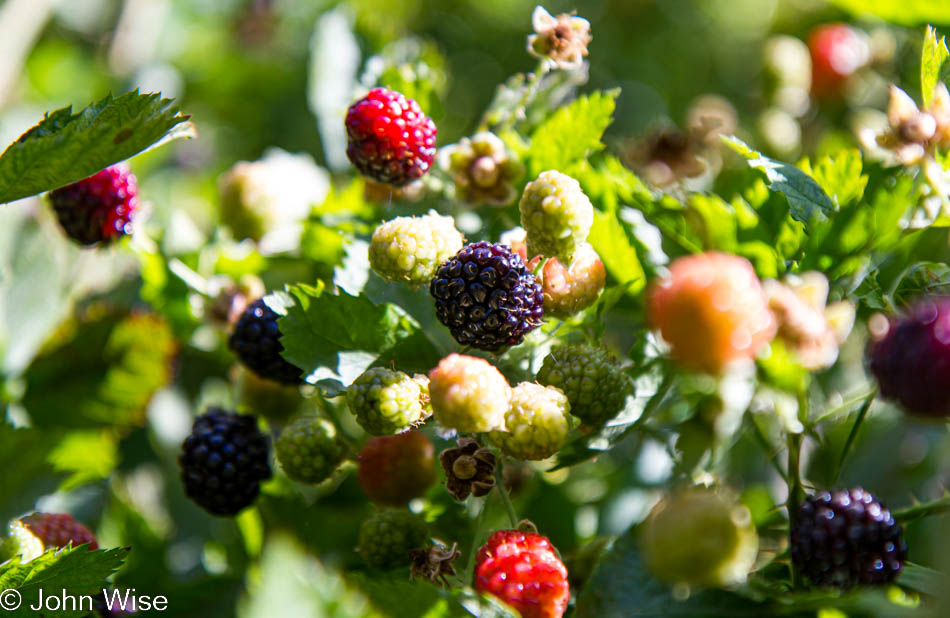
Early O’thirty was about when we were off and driving southwest towards Yuma, Arizona, for a morning of blackberry picking at Silva’s Farms. Two years ago, we picked buckets full to bring back home and freeze. Now, out of fresh, sweet blackberries, it was time to make the trip once more. The season lasts about a month, and the 235-mile drive each way may not seem worth it to some, but then they probably haven’t spent a few hours in an orchard picking blackberries that fall off at a touch, staining fingers purple before being gobbled up. And gobbled up. A few for the bucket, five for me, two for the bucket, and six for me. Two thoughts come to mind: I hope I don’t get a stomach ache and do too many sun-warmed sweet blackberries give you the runs? I can attest that after eating more than a pound – for free – I felt great and was able to maintain my dignity without a mad dash to the outhouse.
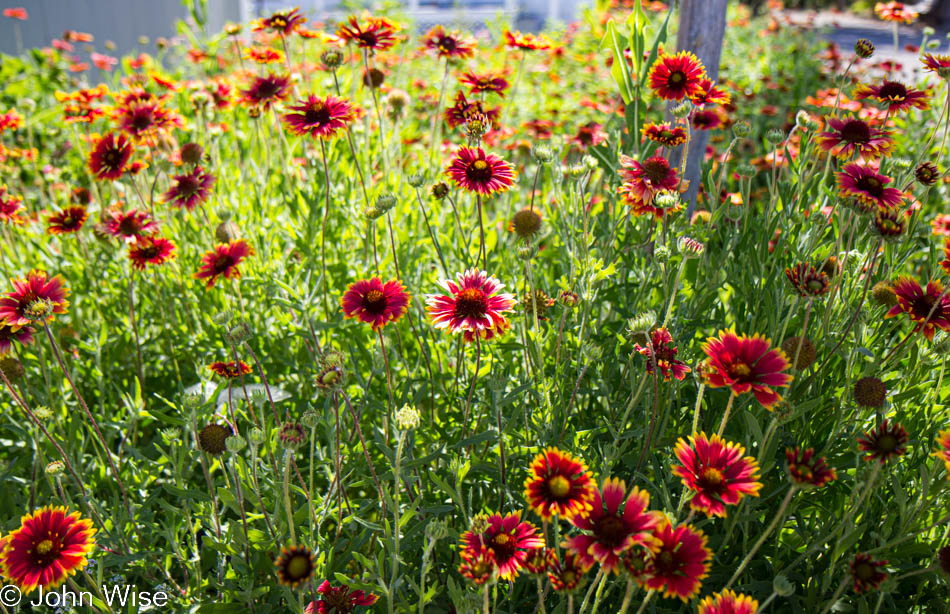
Twenty pounds worth, that’s how many blackberries we ended up packing into the ice chest. For everyone who thought we were crazy for driving so far just for berries, they sure didn’t mind taking a couple of pounds off our hands once they tasted them. From the farm, we drove further south to San Luis on the Mexican border, looking for a roadside taco shack. We found Tacos Sahuaro with the cook armed with a cleaver chopping up the lengua (tongue), which I tried and enjoyed. With my stomach full of tongue, it was time to drive north.
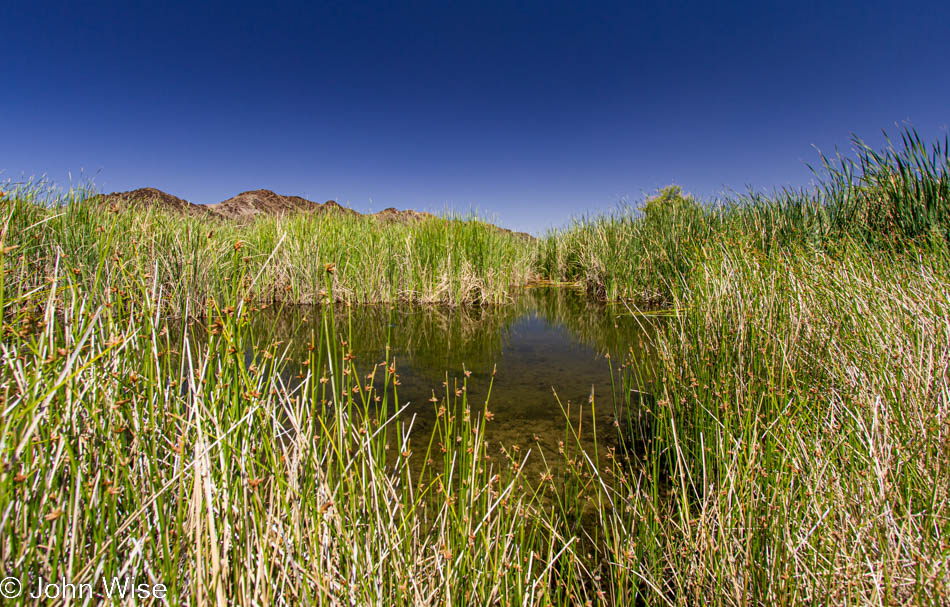
Our first detour was a visit to Imperial Dam, and along the road, we were surprised by an oasis of shallow wetlands. A checkmark is placed next to this location for a winter return when we assume this area must play host to migratory birds. This dam on the Colorado River is the collection point for the water that will be pumped northwest into California and down to the Yuma area to irrigate the desert lands that feed so much of America’s desire for lettuce and other produce. North of the dam, we visited the Senator Wash Reservoir and surrounding lakes to see what was what on the California side of the Colorado River.
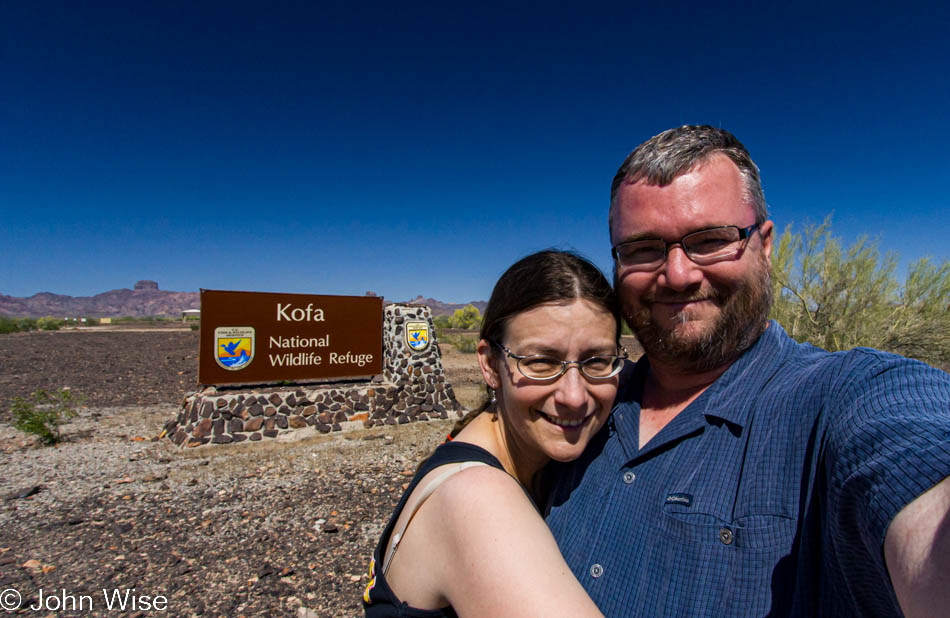
Highway 95 north passes the Kofa National Wildlife Refuge – we failed to see wildlife, but our turnoff from the main highway onto Castle Dome Mine Road was not with the intent of going bird watching; we were driving up this bumpy dirt road to visit the Castle Dome Ghost Town. In our little red Kia Spectra, we bounced along over the washboard road for about 10 miles before approaching the sign directing us to a small car corral.
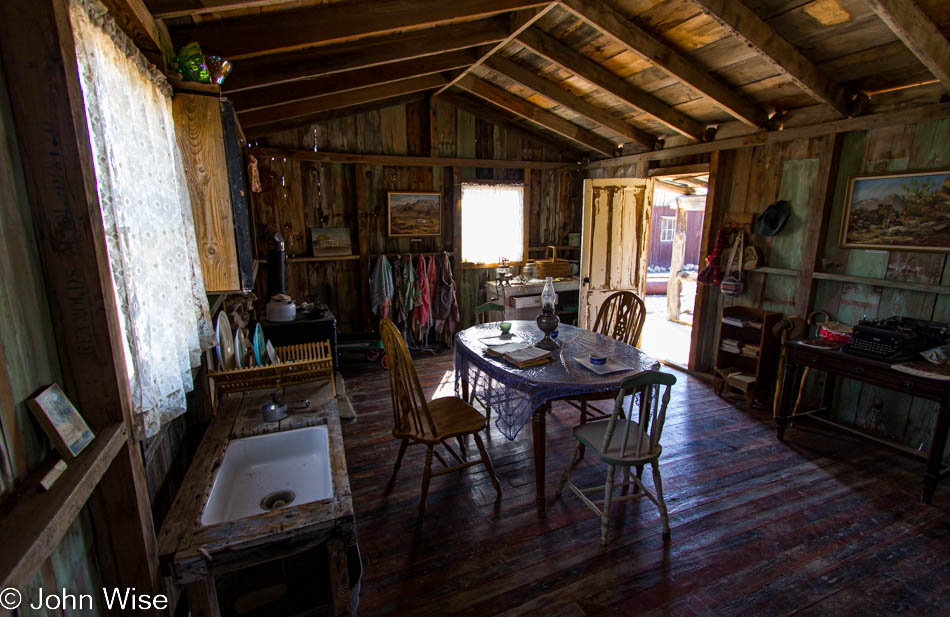
Proprietor Allen Armstrong welcomed us and collected our small $6 entry fee – that was worth every penny, although we didn’t know it at that moment. Castle Dome Ghost Town is one of the most amazing ghost towns we have visited – although we haven’t seen Bodie in California yet. After walking through the gift shop, you enter the town and take two steps back into history. Allen and his wife Stephanie purchased the property, saving it from the wrecking ball, and began restoring the 37 buildings that make up this great attraction. The photo above features some of the belongings of the Stone Cabin Ladies – Stephanie is currently writing a book about the sisters who lived in the area. One of them survived into her 90s and welcomed visitors to their diner until 1988.
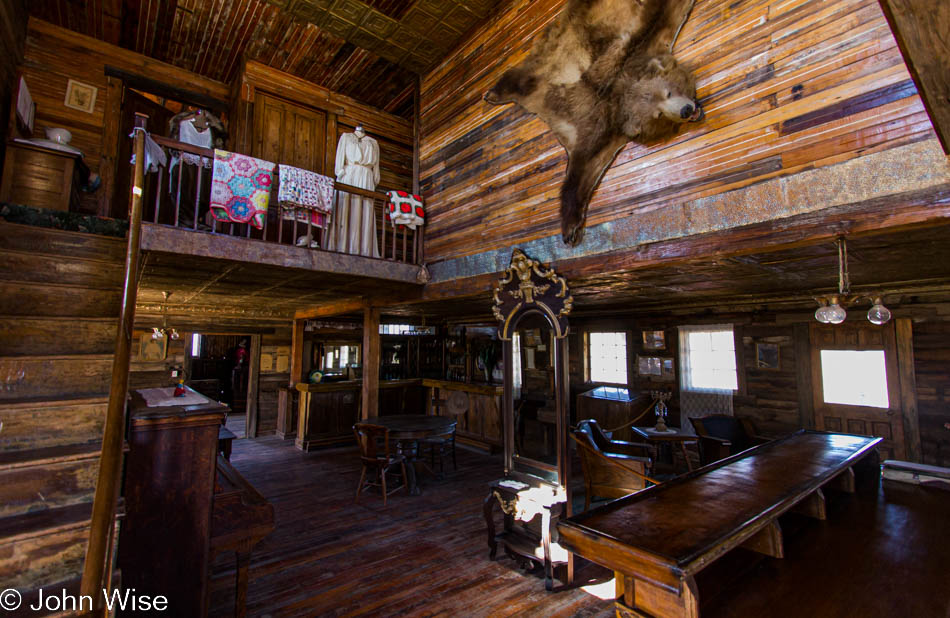
Interior of the hotel with artifacts galore on display. The openness of the displays and the opportunity to walk through this historic site are simply wonderful. Allen explained how many of the treasures were recovered from the mines where “old junk” was discarded. If you plan a visit, don’t do like us, and arrive at 2:30, you’ll be disappointed that you have so little time before they close up and kick out the ghosts at 5:00 pm.
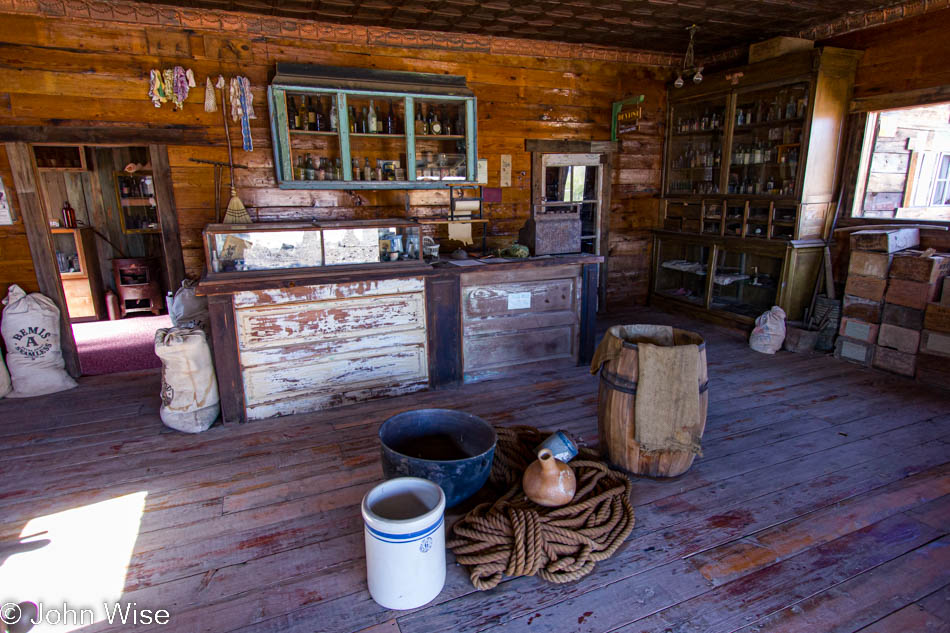
We ran out of time to visit the other side of the road, where an old bunkhouse and some abandoned mines are located. The mines are closed up so no one goes hurting themselves, tumbling down a shaft, or getting lost in some maze with the rattlesnakes. During the summer, the old ghost town sees few visitors – it’s hot, really hot out here, and there ain’t no air conditioning. If you should find yourself wanting to visit and aren’t sure about the hours or directions you can call the ghost town at 928-920-3062. Their map coordinates are: N 33° 02.766 W 114° 10.668
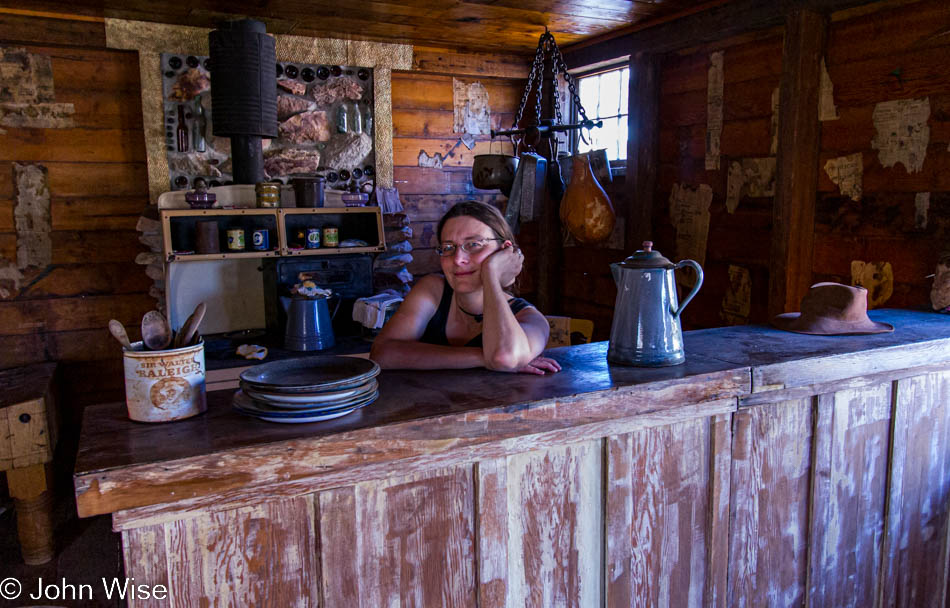
Before leaving, we offered Allen some of our stash of chilled blackberries. He told us of how he and his wife would pick berries when they used to live in Washington, canning them for later use on pancakes. Tomorrow morning, he and his wife would make pancakes to enjoy the blackberries with – kind of a re-acquaintance with a moment from their own history. Take a minute yourself someday and visit Castle Dome Ghost Town and acquaint yourself with a moment from our country’s history – you’ll have a great time out here in the middle of nowhere.





